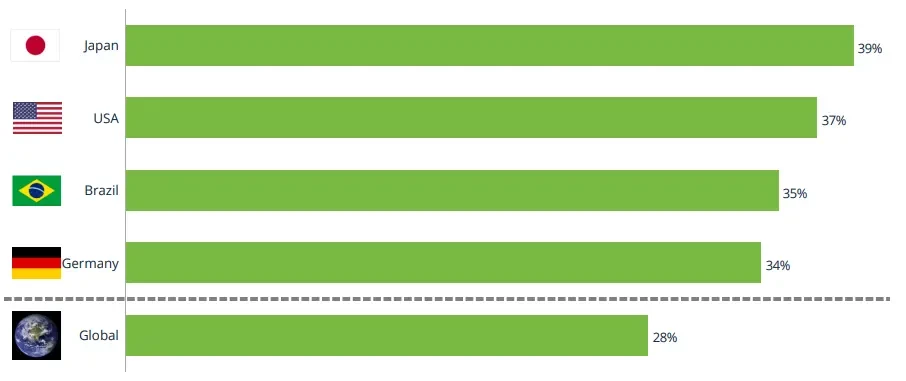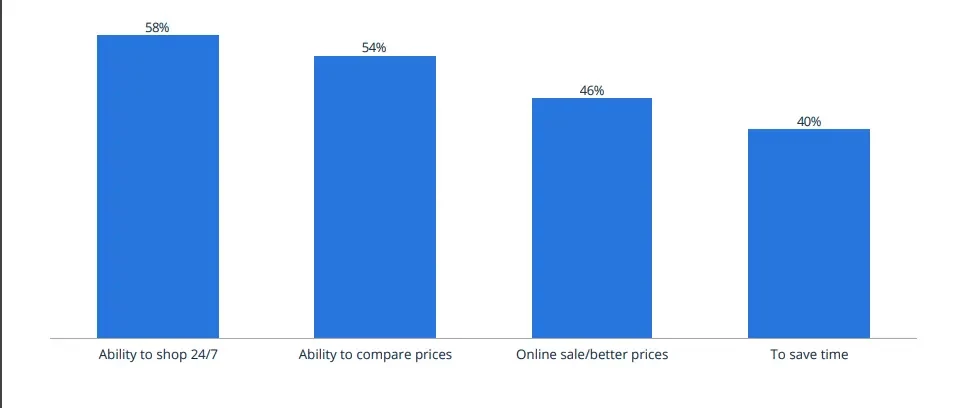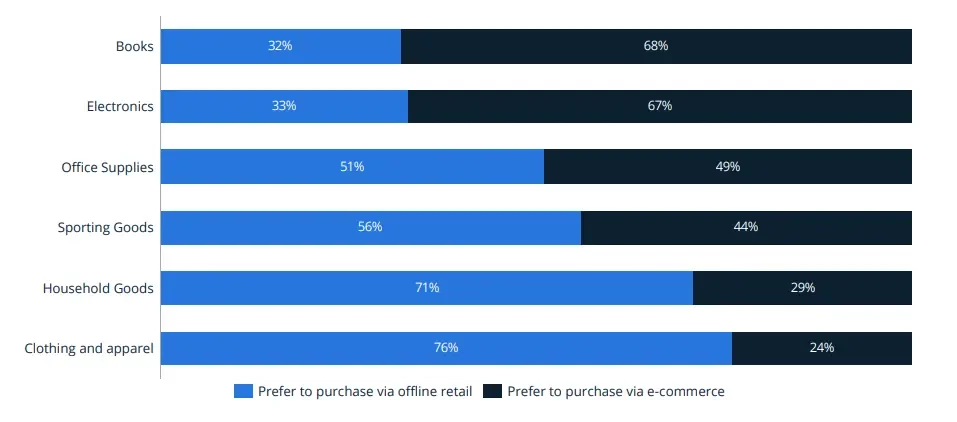Online retail
Statista Digital Market Outlook forecasts the global ecommerce revenue in 2024 will be approximately USD 3,647.00 billion. Although revenues from online retail are still far from the level of offline sales, the trend points to a change in leadership soon. In this article, we will talk about online retail: what it is, what are its advantages and disadvantages.
Online retail: definition and features
Online retail
is a retail business where customers search, select and purchase goods/services exclusively online.
This concept should not be confused with ecommerce. While there are significant similarities between them, there is still a difference. Unlike online retail, ecommerce includes services that are not directly related to sales, such as logistics, payment gateways, digital marketing, and database management.
A retailer, in turn, is a company that sells online, for example:
- supermarkets that place online orders on their websites;
- online stores;
- aggregator platforms where you can sell your goods and services online for a fee.
It is the latter type of retailer that holds the leading position in the global market. Shoppers trust large aggregation platforms, so they are willing to make their online purchases with their help.

Small and medium-sized businesses also prefer to cooperate with them because such retail companies take care not only of advertising their products but also of order processing/support, logistics, and financial calculations.
Many of the aggregator platforms offer secure transactions in terms of payment for the purchased product and have special arrangements with transportation companies. This allows customers to arrange delivery of goods on more favorable terms.
Advantages and disadvantages of online retail for businesses
Like any type of sales, online retail has its strengths and weaknesses.
The advantages of online retail include:
- Unlimited market. You can attract customers from any city or country where you can deliver.
- Easy start in organizing a business. Sometimes all you need is to create a website and fill it with product/service cards with relevant content (with drop shipping, there is no need to purchase and store goods, which simplifies the launch of the project).
- Possibility of cooperation with aggregator platforms. Here you do not even need a personal website, it is enough to create an online store page on the marketplace.
- Reduced overhead costs. You save on renting an office, store, warehouse, purchasing equipment and related furniture, etc.
- Easy scaling. Since you don't have to think about which stores to sell in, you can easily expand your product line and start working with exports.
- Using online marketing techniques for personalized sales. With the help of customer data analysis, you will know everything about your clients and will be able to offer them the most targeted offer.
Automate your online sales with Yespo
The disadvantages of online retail include the following:
- Expenses for online promotion of the company. You will have to spend money on website development and promotion, content marketing, SEO, online advertising, email marketing, building and implementing effective marketing strategies.
- Logistics costs. If you do not sell goods on drop shipping, you must have a warehouse, you will also have to spend money on organizing delivery and processing returns.
- Much competition. In online trading, competition is much higher than offline, so you need to constantly promote your online store and offer a more interesting price/service; if there is a drop in demand, work on your USP (Unique Selling Proposition).
- The need for systematic promotion of a personal brand. For online commerce, company awareness plays a special role, as customers make their choice based on the reputation, fame and reviews of the seller.
Why consumers love online retail
According to Econsultancy, in 2020, global ecommerce sales grew to $26.7 trillion, which is 19% of all retail sales. This is directly related to the coronavirus pandemic and the introduction of quarantine measures in terms of restrictions on offline trade and services. Some consumers tried online shopping for the first time and appreciated it, while those who had shopped online before only strengthened their choice.

Online retail has significant advantages over offline shopping, including the following:
- Time saving: customers do not need to spend hours shopping to compare prices and choose the right product, they just need to go online and quickly analyze the price in different online outlets.
- Convenience of shopping: you can choose goods/services and place an order whenever and wherever you want, there is no need to postpone the purchase to clarify the nuances, for example, to take measurements of height and body parameters for the purchase of children's clothing, check the availability of food in the refrigerator so as not to forget to buy what is out of stock, etc.
- Favorable price: since sellers do not spend money on renting and equipping retail space and save on staff, they can set lower prices than in offline sales outlets for similar products.
- Speed of service: thanks to the implementation of CRM, retailers can quickly process orders and provide feedback to customers, which speeds up the service and receipt of goods/services.
- Best choice from the options offered: when shopping online, you can instantly compare products from different sellers and within the assortment of the same online store, read/view reviews on them to make an informed decision.
Modern trends in online retail
Due to the growing popularity of online shopping in some areas, the share of online orders is gradually reaching the level of offline sales or even outpacing it. For example, online retail is developing rapidly in IT, intellectual property, digital content (subscriptions to online cinema and other media products), electronics, books, clothing, household goods and sports.

Combining online and offline sales into a single marketing strategy also gives companies a significant increase in profits. In general, the following trends have strengthened in online retail:
- development of online sales in regions, small towns and villages, not only in megacities (the increase in the number of companies engaged in the delivery of goods played a role);
- omnichannel retailing and personalization of trade offers, allowing us to offer customers exactly what they are looking for;
- active implementation of mobile applications for ordering and transaction support as part of the development of mcommerce;
- large-scale trading on social media;
- secure transactions through guaranteed receipt of goods placed on marketplaces;
- optimization of delivery: reducing the time it takes to send goods, favorable terms for paying for logistics services (for example, free delivery by partner companies or when purchasing for a certain amount), using delivery by couriers on bicycles, scooters, and electric scooters;
- marketing and sales automation (use of triggered campaigns, implementation of chatbots, use of CDP and CRM);
- the use of Augmented Reality technology, which allows users to evaluate goods by eye, for example, to see how a particular piece of furniture will look in the buyer's room (implemented by online stores like IKEA, and Sephora);

- marketplace takeover;
- the need to optimize online stores for voice search for goods/services and image search.
As you can see, the customer is the main player in the online retail arena. Therefore, only those businesses that manage to adapt their sales to the needs of the target audience in time will win.
Join Our Blog Newsletter!
Stay updated with our latest email marketing tips, product news and case studies.